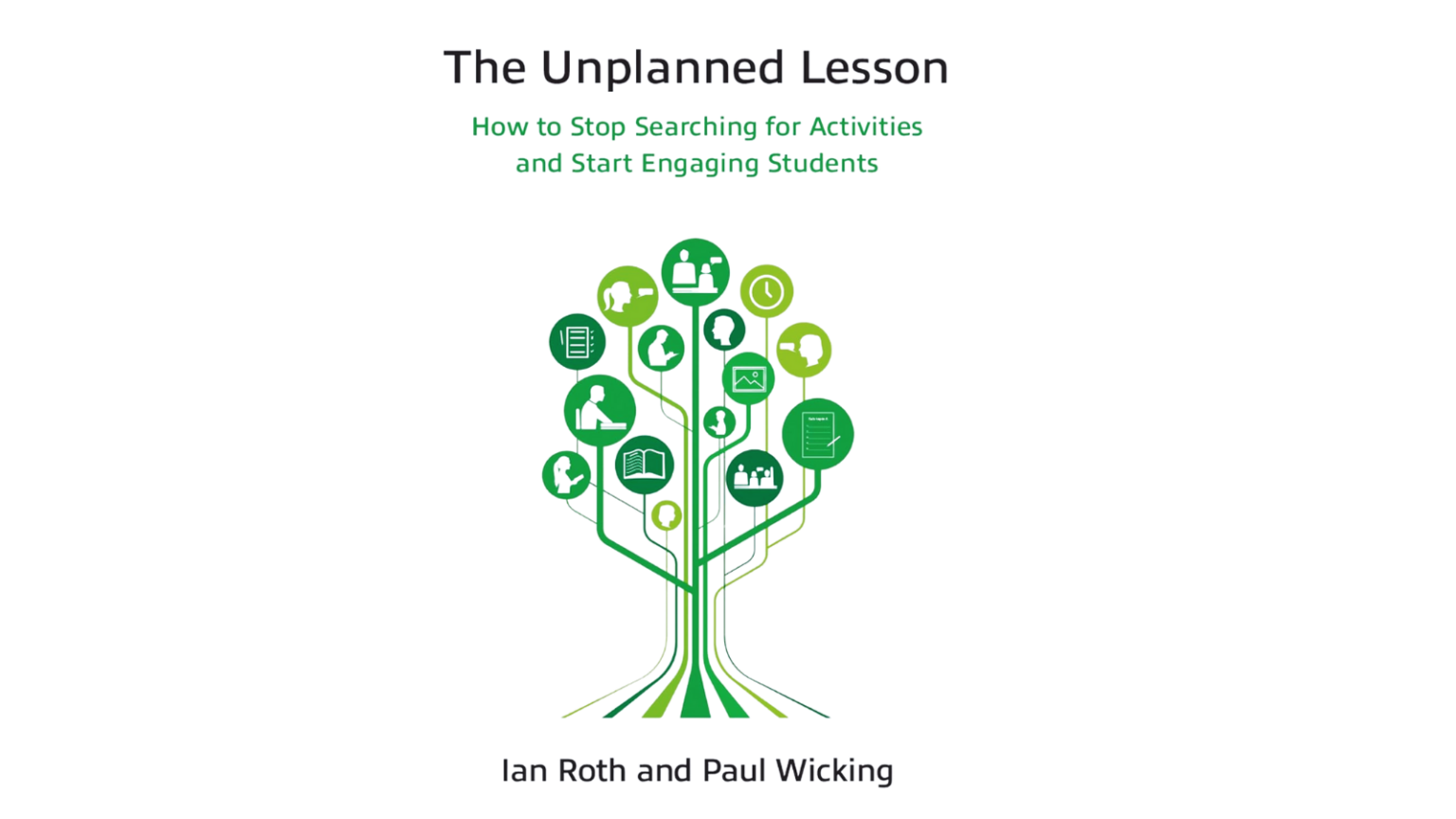The Unplanned Lesson by Ian Roth and Paul Wicking
The Unplanned Lesson was published in late 2023 by University of Michigan Press, which has previously published some brilliant titles for teachers, including A Practical Guide to Assessing English Language Learners by Folse, Hubley and Coombe, and Listening Myths by Brown.
The authors of the book, Ian Roth and Paul Wicking, brilliantly share with readers a unique approach to teaching, called structure-based teaching. Their book provides a new perspective on lesson planning which emphasizes teaching in a more spontaneous, flexible manner, using what the authors refer to as “structures”.
The following is an overview of The Unplanned Lesson’s three sections.
The first section of the book provides a rationale for adopting structure-based teaching. It also defines the term structures and contrasts them with activities. This section also discusses the theoretical underpinnings of this approach, using principles from second language acquisition, organizational development, military training, and coaching.
FERM
The co-authors define a structure as “a smaller container…that has been intentionally constructed to serve some purpose within a larger context. This container creates a space that is multi-purpose yet biased towards encouraging certain types of interactions.” (p.8). According to the authors, a structure must be FERM: flexible (the structure can be used with different content, levels and class sizes), evolvable (the structure can be modified, made more complex, and adapted to other structures), repeatable (the structure can be used over and over, encouraging creative experimentation and often leading to different outcomes), and memorable (the structure can be explained to a class easily, thus reducing teacher talking time).
The Unplanned Lesson: Section two
is a collection of 50 FERM structures. Each includes a visual representation, a mention of the structure’s learning task, a simple description, a few variations, and suggestions for other structures that can be used with it. The structures are wide-ranging, including practice in all four skills, as well as vocabulary. These fastidious structures are clearly elucidated.
The concluding section
features some additional assistance for the reader, including suggestions for assessment, a few modifications for structures (called “evolutions”), and finally, some lesson sequences, demonstrating how structures can work together in a lesson.
Overall, The Unplanned Lesson delivers a fresh perspective on lesson planning and the importance of flexibility in teaching. I agree with many of the points the authors make, including the importance of reducing teacher preparation time, not to mention the need to be flexible, especially when one’s lesson plan is not succeeding.
The structures in the second section of the book are easy to understand and quite creative. I found many interesting structures that I would like to explore with the university students I currently teach. One structure that appealed to me was “50/50 Questions” where students think of a dichotomous question that they think half of the class will answer in one way, and the other half will answer the other way. Students then mingle and ask everybody their question.
Diamond 9
In the end, they must determine which question got the closest to a 50/50 split. Another intriguing structure, “Diamond 9”, assigns students to create nine different answers to a question, writing them on slips of paper or sticky notes. Next, they organize the slips of paper into a diamond shape, with the best responses closer to the top of the diamond and the least appealing ones near the bottom. They take smartphone photos of their diamonds, then form groups and discuss their diamonds.
Whether or not one chooses to adopt the structure based approach in one’s own teaching, The Unplanned Lesson engages the reader to rethink how they plan lessons as well as the components they use in each lesson. I look forward to using some of the structures in this book in my courses this year.






